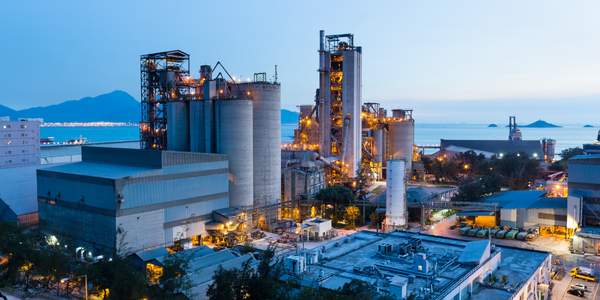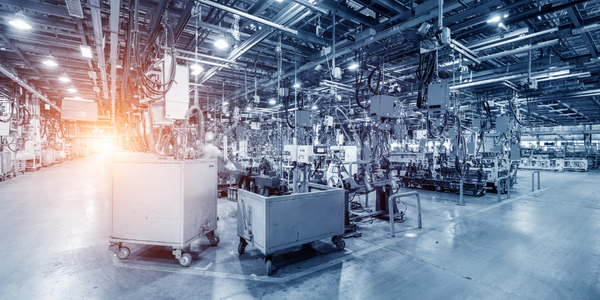Technology Category
- Sensors - Chemical Sensors
- Sensors - Liquid Detection Sensors
Applicable Industries
- Chemicals
- Food & Beverage
Applicable Functions
- Logistics & Transportation
- Quality Assurance
Use Cases
- Leasing Finance Automation
- Onsite Human Safety Management
Services
- System Integration
About The Customer
Müller is a multinational producer of dairy products, employing over 20,000 people throughout Europe. In the UK, Müller develops, manufactures, and markets a wide range of branded and private-label dairy products made with milk from over 1,500 farmers in Britain for the UK market. It operates through three business units in the UK: Müller Yogurt & Desserts, Müller Milk & Ingredients, and Milk & More. The company has over 8,000 people spread across 80+ sites, dealing with several health and safety challenges, including managing their hazardous substances safely and compliantly.
The Challenge
Müller, a multinational dairy products producer, faced significant challenges in managing health and safety across its 80+ sites. With over 8,000 employees, the company had to ensure the safe and compliant handling of hazardous substances. The complexity of their supply chain, coupled with the need to maintain high health and safety standards, made standardizing safety processes a key priority. The company sources materials from a wide range of global suppliers, adding another layer of complexity to their operations. The main challenge was to unify standards and processes under one strategy, which was difficult due to the differing systems, risks, and capabilities across their many sites. Staff had to spend a significant amount of time updating contractor information and keeping chemical risk assessments up-to-date. As the company expanded rapidly, the health and safety team needed a framework to standardize operational excellence activities and ways of working across the business.
The Solution
Müller chose EcoOnline's Chemical Safety solutions to digitize their processes and drive safety behavior across the company. Sypol, a part of EcoOnline, has a proven track record of helping food manufacturers manage the unique COSHH (Control of Substances Hazardous to Health) challenges associated with food production. The software flags when COSHH assessments need to be updated in line with new legislation, enabling Müller to better unite standards and meet compliance across sites. The company now has a world-class Chemical Safety management system, allowing them to monitor performance and identify areas for improvement across its many sites. With Sypol's help, Müller has significantly improved the way it manages COSHH risks and compliance, and has been able to influence employee attitudes and behaviors about safety.
Operational Impact
Quantitative Benefit

Case Study missing?
Start adding your own!
Register with your work email and create a new case study profile for your business.
Related Case Studies.

Case Study
The Kellogg Company
Kellogg keeps a close eye on its trade spend, analyzing large volumes of data and running complex simulations to predict which promotional activities will be the most effective. Kellogg needed to decrease the trade spend but its traditional relational database on premises could not keep up with the pace of demand.

Case Study
HEINEKEN Uses the Cloud to Reach 10.5 Million Consumers
For 2012 campaign, the Bond promotion, it planned to launch the campaign at the same time everywhere on the planet. That created unprecedented challenges for HEINEKEN—nowhere more so than in its technology operation. The primary digital content for the campaign was a 100-megabyte movie that had to play flawlessly for millions of viewers worldwide. After all, Bond never fails. No one was going to tolerate a technology failure that might bruise his brand.Previously, HEINEKEN had supported digital media at its outsourced datacenter. But that datacenter lacked the computing resources HEINEKEN needed, and building them—especially to support peak traffic that would total millions of simultaneous hits—would have been both time-consuming and expensive. Nor would it have provided the geographic reach that HEINEKEN needed to minimize latency worldwide.

Case Study
Honeywell - Tata Chemicals Improves Data Accessibility with OneWireless
Tata was facing data accessibility challenges in the cement plant control room tapping signals from remote process control areas and other distant locations, including the gas scrubber. Tata needed a wireless solution to extend its control network securely to remote locations that would also provide seamless communication with existing control applications.

Case Study
Advanced Elastomer Systems Upgrades Production
In order to maintain its share of the international market for thermoplastic elastomers AES recently expanded its Florida plant by adding a new production line. While the existing lines were operating satisfactorily using a PROVOX distributed control system with traditional analog I/O, AES wanted advanced technology on the new line for greater economy, efficiency, and reliability. AES officials were anxious to get this line into production to meet incoming orders, but two hurricanes slowed construction.

Case Study
Energy Management System at Sugar Industry
The company wanted to use the information from the system to claim under the renewable energy certificate scheme. The benefit to the company under the renewable energy certificates is Rs 75 million a year. To enable the above, an end-to-end solution for load monitoring, consumption monitoring, online data monitoring, automatic meter data acquisition which can be exported to SAP and other applications is required.

Case Study
Coca Cola Swaziland Conco Case Study
Coco Cola Swaziland, South Africa would like to find a solution that would enable the following results: - Reduce energy consumption by 20% in one year. - Formulate a series of strategic initiatives that would enlist the commitment of corporate management and create employee awareness while helping meet departmental targets and investing in tools that assist with energy management. - Formulate a series of tactical initiatives that would optimize energy usage on the shop floor. These would include charging forklifts and running cold rooms only during off-peak periods, running the dust extractors only during working hours and basing lights and air-conditioning on someone’s presence. - Increase visibility into the factory and other processes. - Enable limited, non-intrusive control functions for certain processes.







